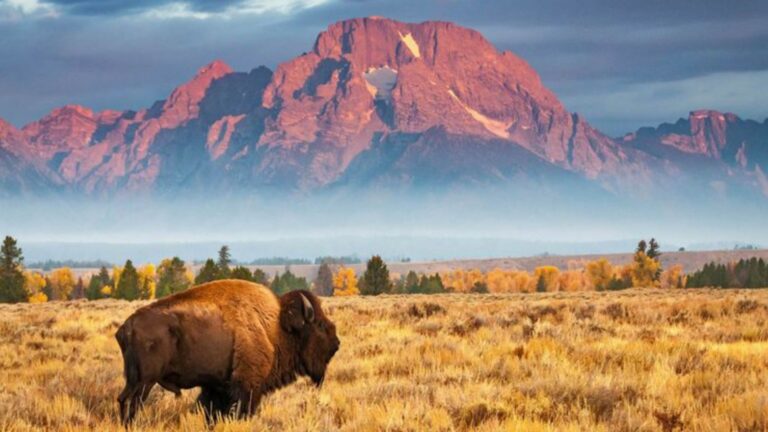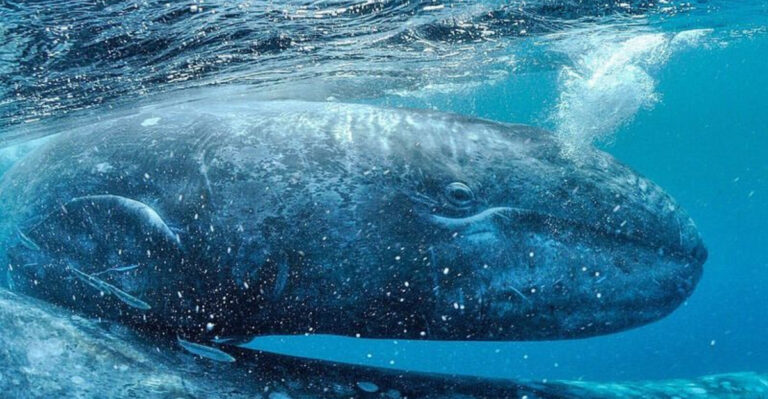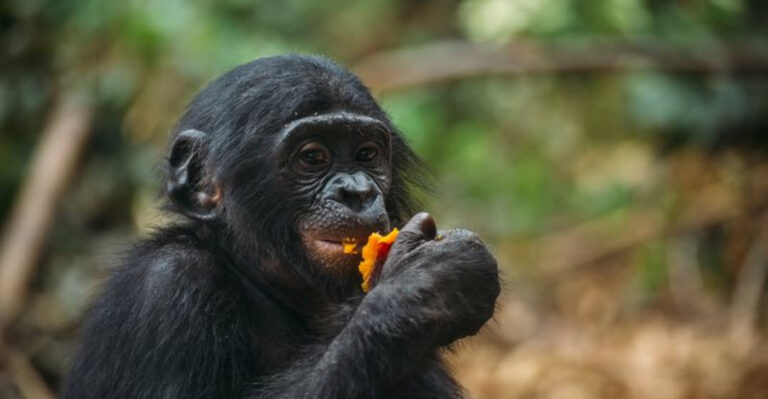Top 9 Most Common Birds With Yellow Chests
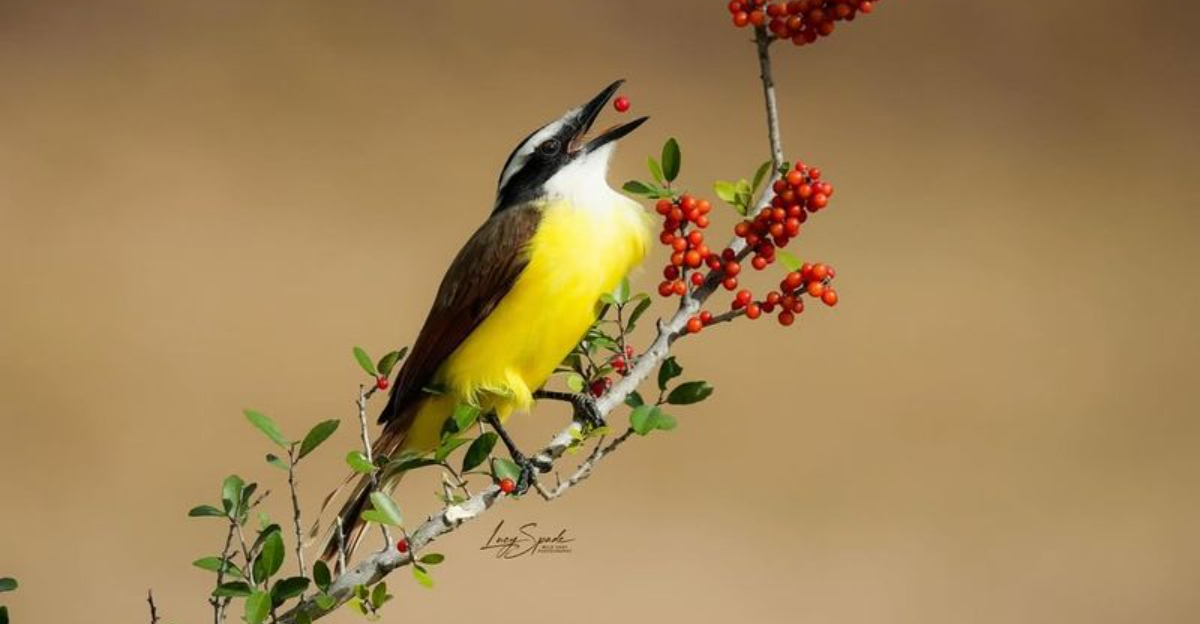
Bird watching is a delightful hobby that connects people with nature. Among the diverse avian species, those with vibrant yellow chests often catch the eye. These birds, adorned with sunshine-like plumage, not only bring a splash of color to their habitats but also intrigue bird enthusiasts worldwide.
From bustling backyards to serene forests, let’s explore some of the most common birds with radiant yellow chests that you might encounter in your birdwatching adventures.
1. American Goldfinch
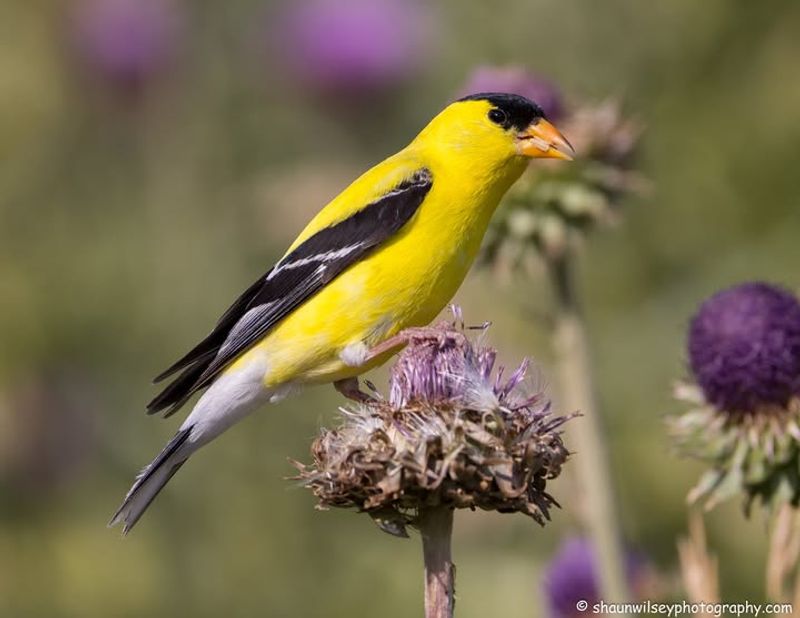
The American Goldfinch, with its striking yellow chest, is a favorite among birdwatchers. It is commonly found in gardens and open meadows across North America. These small, lively birds are often seen fluttering around sunflowers and thistles.
In the summer, males boast a bright yellow plumage, contrasting with their black wings. This coloration helps them stand out as they flit from flower to flower.
During winter, their feathers turn a more subdued olive, blending into the wintry landscape. Yet, their cheerful song continues to brighten the dull days.
2. Yellow Warbler
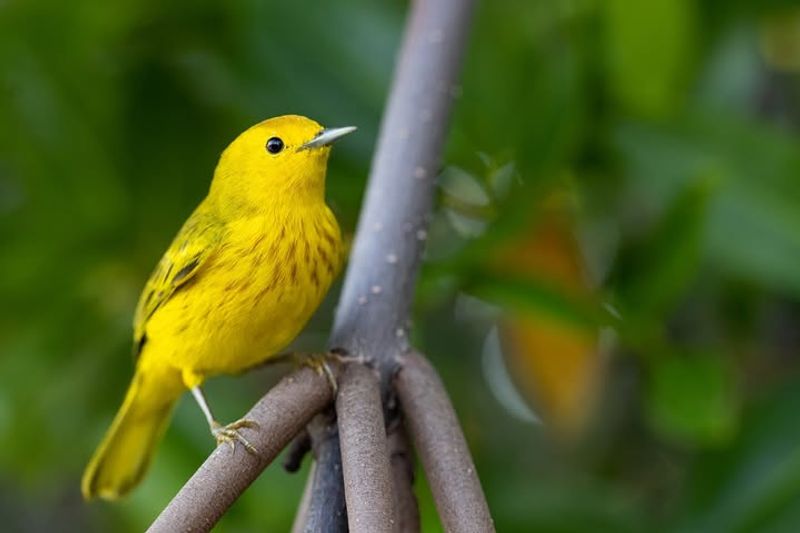
The Yellow Warbler is aptly named for its vivid yellow coloring, covering its entire body. Found in thickets and woodland edges, these small birds are widespread across North America.
Their song is a sweet, whistled tune, often heard before the bird is seen among the leaves. This warbler’s bright plumage makes it a striking sight, especially during the breeding season when males are most colorful.
They are agile flyers, darting through branches in pursuit of insects, their primary diet. Their energetic presence enlivens any habitat they visit.
3. Western Tanager
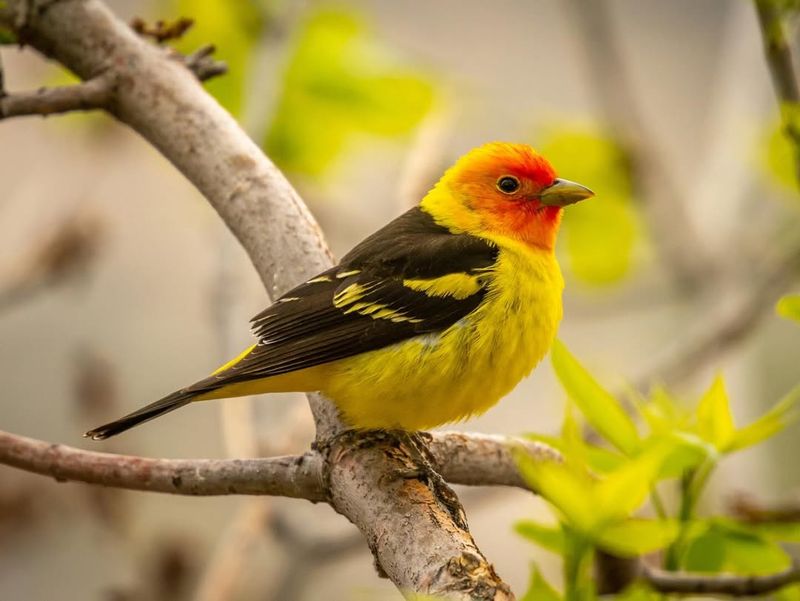
With a flame-orange head and a stunning yellow chest, the Western Tanager is a striking bird. These birds are found in open woods and forests across western North America.
During summer, males exhibit the brightest colors, which they use to attract mates. Their song, a series of short, sweet notes, is a pleasant addition to their woodland habitats.
Though their striking colors are reminiscent of tropical birds, Western Tanagers are migratory, spending winters in Central America.
4. Yellow-Breasted Chat
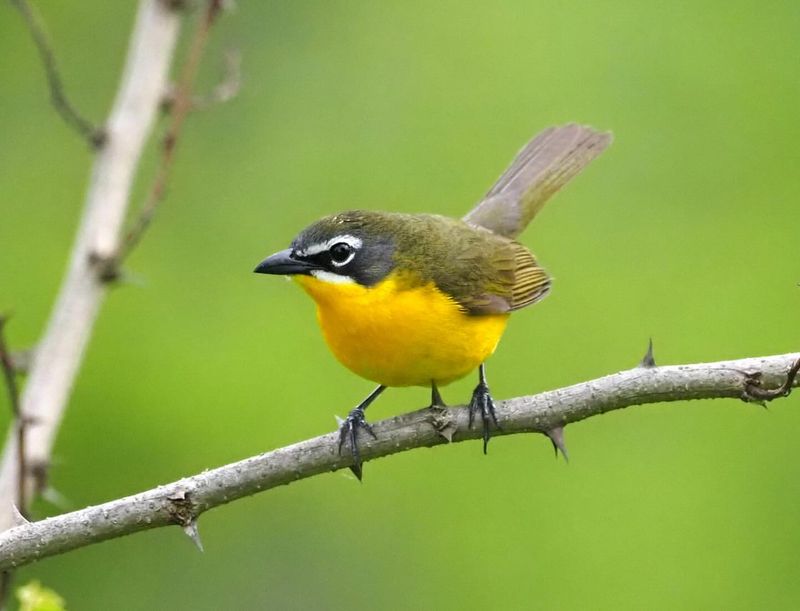
The Yellow-breasted Chat is known for its large size among warblers and its vibrant yellow chest. Found in dense, shrubby areas, they are secretive by nature but vocally active.
Their call is a mix of whistles and clucks, echoing through their habitats, often revealing their presence when they stay hidden in the foliage.
During the breeding season, males may perform display flights, showcasing their bright plumage. Despite their size, their agility allows them to navigate through dense thickets with ease and precision.
5. Common Yellowthroat
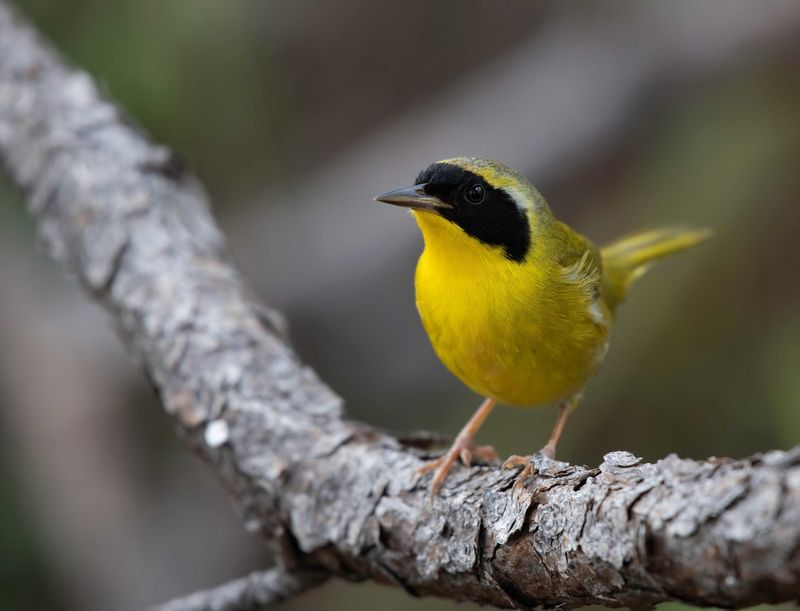
Common Yellowthroats are easily recognized by their bright yellow chests and the distinctive black masks on males. They are widespread across North America, inhabiting marshes, wetlands, and thick vegetation.
Their call is a distinctive ‘witchity-witchity-witchity’, often heard before the bird is seen. This songbird thrives in dense undergrowth, where it forages for insects.
Males display during the breeding season, hopping between branches with their songs. These small warblers are resilient, adapting well to varied environments, making them a common sight for bird enthusiasts.
6. Prothonotary Warbler
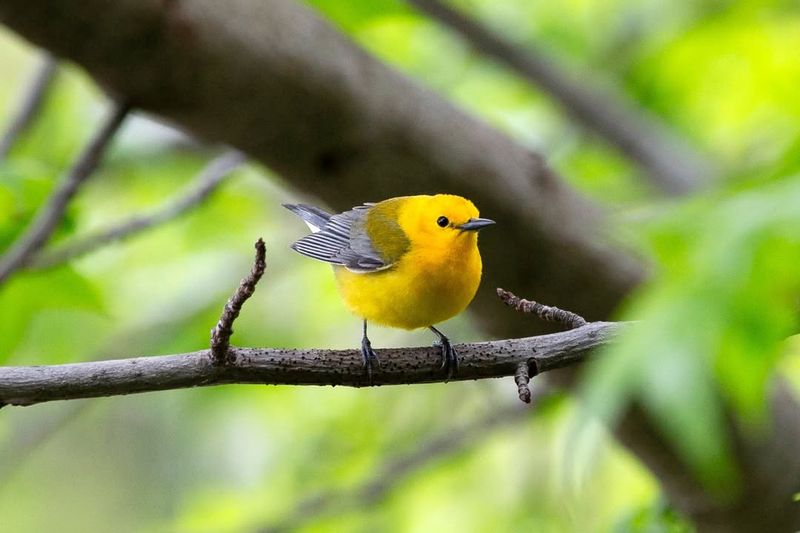
The Prothonotary Warbler is notable for its sunlit yellow chest and bluish-gray wings. Found in wooded swamps and mangroves, these birds bring a touch of brightness to their habitats.
Unlike many warblers that prefer dry areas, Prothonotaries are often seen near water, where they nest in tree cavities. Their preference for wetland habitats makes them unique among their family.
Their energetic movements and striking colors make them a favorite among birdwatchers, especially during migration. The sight of a Prothonotary Warbler is always a memorable moment.
7. Eastern Meadowlark
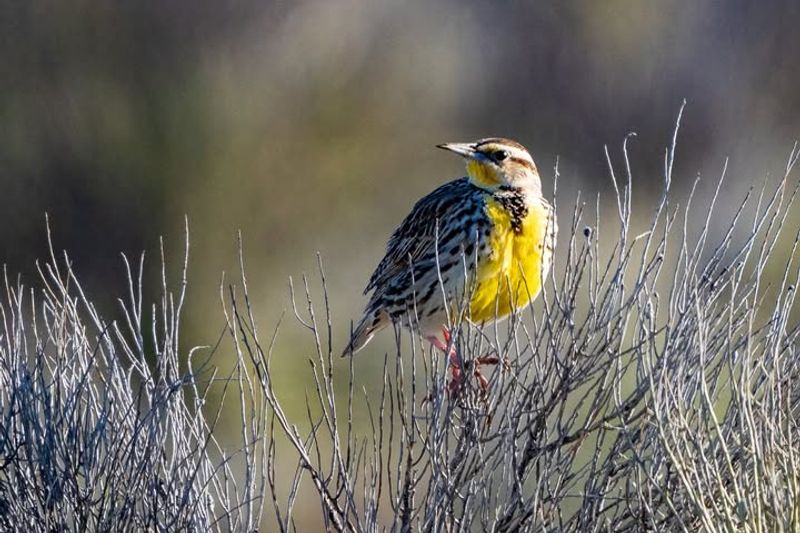
Eastern Meadowlarks are known for their cheerful songs and bright yellow chests. These birds are commonly found in open fields and pastures across the eastern United States.
Their melodious tunes are a staple of rural landscapes, often perched atop fence posts as they sing. The black V on their chest contrasts sharply with their yellow underparts.
During the breeding season, males sing to defend their territories and attract mates. Their presence is a joyful addition to the countryside, echoing the vibrancy of their surroundings.
8. Yellow-Bellied Sapsucker
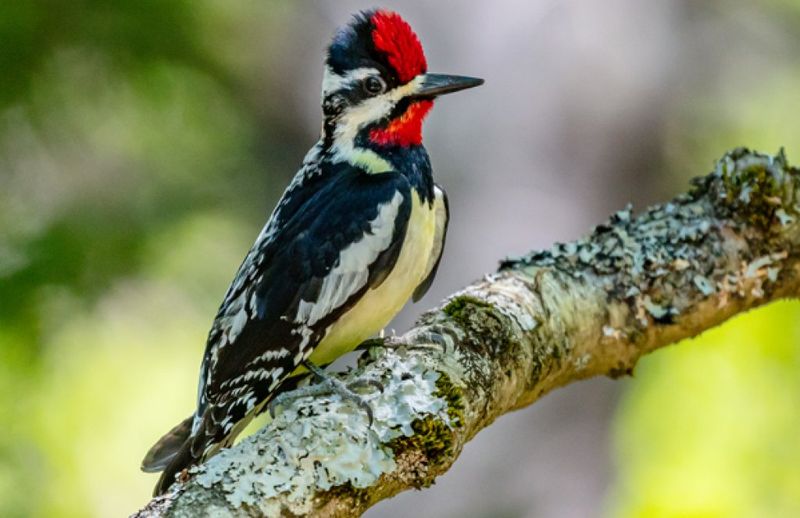
The Yellow-bellied Sapsucker is recognized by its yellow chest and red forehead. Found in forests across North America, these birds are known for drilling sap wells in trees.
They feed on the sap and insects attracted to it, creating a complex feeding strategy. Their presence is often indicated by rows of neatly drilled holes in tree bark.
These woodpeckers are migratory, spending winters in the southern United States and Central America. Their unique feeding habits and vibrant plumage make them fascinating subjects for bird enthusiasts.
9. Great Kiskadee
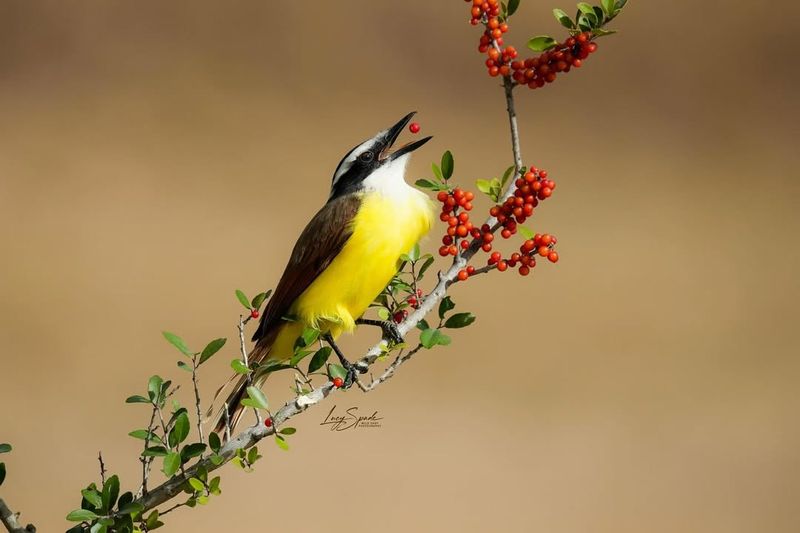
The Great Kiskadee, with its bright yellow chest, is a striking bird found in Central and South America. These birds are adaptable, thriving in urban and rural settings alike.
Their loud, exuberant calls are a familiar sound in their range, often heard before the bird is seen. Their diet is varied, including insects, fruits, and small vertebrates.
Their adaptability and bold behaviors make them a common sight in gardens and parks. The Great Kiskadee’s vibrant presence adds a splash of color to any landscape it inhabits.


